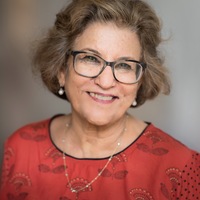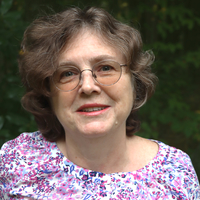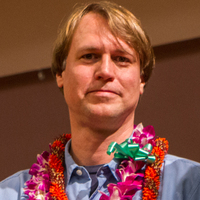Papers by Alexander Adelaar
Oxford University Press eBooks, Nov 26, 1997
Ethnobiology Letters, 2018
Atlas of Languages of Intercultural Communication in the Pacific, Asia, and the Americas, 1996
Oceanic Linguistics, 2000

Linguistics, Oct 28, 2011
Austronesian linguistics is the linguistic study of languages belonging to the Austronesian langu... more Austronesian linguistics is the linguistic study of languages belonging to the Austronesian language family. The more than 1,200 Austronesian languages occupy a vast area. Traditionally, they are spoken in the Pacific in the area bounded by Hawaii in the northeast, Taiwan in the northwest, Easter Island in the southeast, New Zealand in the southwest, and Wallis Island in the south. In Southeast Asia they are spoken in the Philippines, in Brunei Darussalam, and in most parts of Indonesia, Malaysia, and East Timor. Minorities speaking Austronesian languages are also found in some regions in Vietnam, Kampuchea, southern Thailand, and coastal South Burma. Much farther to the west, speakers of Austronesian languages are found in Madagascar and the island of Mayotte (Comoros), along the East African coast. Australian languages, the Austro-Asiatic (Orang Asli) languages in the Malay Peninsula, and the Papuan languages in and around New Guinea do not belong to the Austronesian language family. Genetically, the Austronesian language family has several primary branches. Most of these consist of only one or several of the twenty or so Austronesian languages of Taiwan (the so-called Formosan languages). Only one branch, Malayo-Polynesian, includes all other Austronesian languages. Historically, the Austronesian language family is commonly believed to have originated in Taiwan, whence its members spread to other parts of Southeast Asia, to the Pacific, and to Madagascar (see Blust 2013, cited under Textbooks).
Routledge eBooks, 2005
B1 - Research Book Chapter

Siraya is a dormant Austronesian language once spoken in the Tainan region in Southwest Taiwan. I... more Siraya is a dormant Austronesian language once spoken in the Tainan region in Southwest Taiwan. It also became a lingua franca when missionaries used it for religious, administrative and educational purposes outside its native area in the first half of the 17th century. It ceased to be spoken at the beginning of the 20th century. However, for the last two decades there has been a growing identity awareness among descendants of the erstwhile Siraya community, who are trying to obtain official tribe status and are involved in reviving the Siraya language. Meanwhile, I worked on the analysis and description of a 17th century Siraya translation of the Gospel of St. Matthew, which recently culminated in a book (Author, 2011, Siraya. Retrieving the phonology, grammar and lexicon of a dormant Formosan language. Berlin: de Gruyter Mouton). I would like to discuss ways to integrate my analysis with the revival activities of the Siraya community. Some of the issues that need special attention are: 1. the endings ‐en (patient voice) and ‐an (locative voice): are there important grounds for maintaining the implied voice opposition? 2. two lexical sources which represent different Siraya dialects: should they be combined (thereby creating an unrepresentative dialect mix)? Or should lexicon from the phonologically innovative dialect be adjusted to the phonology of the conservative dialect via the application of the comparative method? 3. "anticipating sequences" (AS). Siraya complex verb phrases often consist of an adverb followed by a lexical verb; this adverb is the head of the verb phrase and usually carries TAM ‐, voice ‐ and pronominal marking. An anticipating sequence is generally a formal part (an initial consonant, syllable, or two syllables) of the lexical verb, which is prefixed to the adverbial head. Examples: Raraman=hu ka kmi‐dung k ita Father‐your who AS‐do.or.be.in.the.dark see 'your Father who sees in secret' Mu‐imid=kamu kawa m‐u‐mha ki ata? AS‐do.all=you QU actor‐motion‐understand case marker this 'Do you understand all this?' Anticipating sequences abound in one Siraya dialect but are absent in the other. Were they an integrated part of the basic grammar of this one dialect, or were they only a stylistic device? Should they be taught in a Siraya language revival programme, or can they be ignored? These and other problems need to be addressed in the revival of Siraya.

The autochthonous languages of Borneo have been divided into ten separate subgroups (Hudson 1978)... more The autochthonous languages of Borneo have been divided into ten separate subgroups (Hudson 1978). This paper discusses four subgroups on which the author has done research. The Southeast Barito subgroup includes Malagasy. This language underwent considerable influence from Malay and Javanese. Malay influence appears to have lasted until after the introduction of Islam in Southeast Asia, and there are also some indications that the Arabic script was introduced to Madagascar by Indonesians (possibly Javanese). The author puts forth the hypothesis that the Malagasy, rather than having sailed to Madagascar of their own accord, may have been transported there (as subordinates) by Malays. The Malayic subgroup includes Iban and Malay. The diversity and relative archaism of the Malayic languages spoken in West Borneo suggest that the Malayic homeland may have been in this area. The Tamanic languages are phonologically, morphosyntactically and lexically close enough to the South Sulawesi languages to form a subgroup with them. They have some striking phonological developments in common with Buginese, with which they seem to form a separate branch within the South Sulawesi language group. The Land Dayak languages have a few striking lexical and phonological similarities in common with Aslian languages. This suggests that Land Dayak originated as the result of a language shift from Aslian to Austronesian, or that both Land Dayak and Aslian have in common a substratum from an unknown third language.
Journal of Southeast Asian Studies, 1999
Journal of Southeast Asian Studies, Sep 1, 1999
De Gruyter eBooks, Sep 25, 2017
Bijdragen tot de Taal-, Land- en Volkenkunde, 1984
Bijdragen tot de Taal-, Land- en Volkenkunde, 1989

South Pacific Journal of Psychology, 1999
ABSTRACTThis article follows the development of Malay from prehistorical times to the present. Af... more ABSTRACTThis article follows the development of Malay from prehistorical times to the present. After a brief overview of the variety of languages in Southeast Asia and Oceania, the position of Malay within the Austronesian language family is discussed as well as the Malay homeland. The history of Malay is followed throughout its most important stages, from the period of the oldest written evidence in the late 7th century AD to the age of the Malaccan sultanate in the 15th-16th centuries, the colonial period in which Malay became the most important language in all domains of public life except in the highest echelons, and the present post-independence period in which Malay has become the national language in four states of Southeast Asia. Attention is also given to sociolinguistic differentiation, to foreign influences, to the engineering planning and manipulation of Malay in recent times and to its role as a vehicle for the spread of several religions and foreign (Indian, Mid-eastern, European) cultural influences.
De Gruyter eBooks, Dec 31, 1994
... wife'; PMP* bubu Tishtrap'> PML*... more ... wife'; PMP* bubu Tishtrap'> PML* bubu; EMB, KAL, TAM bw; Makassarese bu, buwu, Buginese bu, also buwu (Matthes 1874) and bubu (Ide Said ... The classification of the Tamanic languages 17 (4) PMP* ala (q)'get, fetch'regularly became EMB ala and PSS* ala'take'; (it is not ...
De Gruyter eBooks, Dec 14, 2011











Uploads
Papers by Alexander Adelaar
Several chapters in the volume propose significant revisions to currently accepted reconstructions of PAn phonology and morphosyntax. Other chapters focus on the historical development of languages of particular regions including Taiwan, the Philippines, Borneo, Java, the Strait of Malacca, Sulawesi, the Moluccas, New Guinea, the Solomon Is., Vanuatu, Polynesia and Micronesia.
René van den Berg and Robert L. Busenitz, A grammar of Balantak. A language of Eastern Sulawesi. SIL eBook 40. Digital Resources SIL International. 2012.
The Bidayuh language: yesterday, today and tomorrow by C. R. Rensch, C. M. Rensch, J. Noeb & R. Sulis Ridu. Kuching (Malaysia): Dayak Bidayuh National Association, 2006.
The peopling of East Asia; Putting together archaeology, linguistics and genetics. Laurent Sagart, Roger M. Blench, and Alicia Sanchez-Mazas eds. London, New York: RoutledgeCurzon. 2005.
Papers in Austronesian subgrouping and dialectology. John Bowden and Nikolaus Himmelmann eds. Canberra: Pacific Linguistic (National Australian University), 2004.
Issues in Austronesian historical phonology. John Lynch ed. Canberra: Pacific Linguistics (Australian National University), 2003.
Johnny Tjia: A grammar of Mualang. An Ibanic language of West Kalimantan, Indonesia. Leiden: LOT (Netherlands Graduate School of Linguistics), 2007, 438 pp.
A world of words. Revisiting the work of Renward Brandstetter (1860-1942) on Lucerne and Austronesia (Robert Blust and Jürg Schneider, eds). Frankfurter Forschungen zu Südostasien Band 8. Wiesbaden: Harrassowitz Verlag, 2012.
The publishing house Le Murmure, the scientific editors and the contributors are happy to announce the release of this book in tribute to the interdisciplinary social anthropologist and historian Bernard Sellato.
Издательство Le Murmure, научные редакторы и соавторы рады сообщить о выпуске этой книги, посвященной междисциплинарному социальному антропологу и историку Бернару Селлато.
出版社 Le Murmure、科学编辑和撰稿人很高兴地宣布这本书的发行,向跨学科的社会人类学家和历史学家伯纳德-塞拉托致敬。
La editorial Le Murmure, los editores científicos y los colaboradores se complacen en anunciar la publicación de este libro en homenaje al antropólogo social e historiador interdisciplinario Bernard Sellato.
Penerbit Le Murmure, para editor ilmiah dan para kontributor dengan senang hati mengumumkan peluncuran buku ini sebagai penghormatan kepada antropolog dan sejarawan interdisipliner, Bernard Sellato. [bahasa Indonesia]
Penerbit Le Murmure, penyunting saintifik dan penyumbang kertas kerja dengan sukacitanya mengumumkan pengeluaran buku ini sebagai penghormatan kepada ahli antropologi dan sejarah antara disiplin, Bernard Sellato. [bahasa Melayu]
Pierre Le Roux, Alexander Adelaar, Bernard Moizo (dir.) : Bornéo à cœur. Hommage à Bernard Sellato, argonaute de la forêt tropicale/Borneo at Heart. A Tribute to Bernard Sellato, Argonaut of the Tropical Rainforest, Auxonne (France), Le Murmure éditeur (coll. « Humanités »), publié avec le concours de l'IRD, français & anglais/French and English, 1083 p., cartes, photos, dessins/maps, photos, drawings.
Le Murmure, éditeur à la marge
https://www.editions-du-murmure.fr/collection-u-limit.b/s470586p/Borneo-a-coeur-Hommage-a-Bernard-Sellato-L-Argonaute-de-la-foret-tropicale
ISBN : 978-2-373-060-485
Prix public TTC/Public price incl. tax : 35 €
Pour commander l’ouvrage/To order this book :
[email protected]
avec des contributions de/with contributions by
Alexander ADELAAR (linguiste austronésianiste, University of Melbourne, Australie), Junita ARNELD (ethnologue, Museo delle Culture, Lugano, Suisse, & Universitas Trisakti, Jakarta, Indonésie), Adela BAER (anthropologue médicale, Oregon State University, Portland, États-Unis), Jean BAFFIE (socio-anthropologue, CNRS, IrAsia, Marseille, France), Pascal COUDERC (ethnologue, Québec, Canada), Hubert FORESTIER (archéologue préhistorien, Muséum national d’Histoire naturelle, Paris, France), James J. FOX (anthropologue, Australian National University, Canberra, Australie), Michel GRENET (archéologue préhistorien, université Jean-Jaurès, Toulouse, France), Antonio J. GUERREIRO (ethnologue, IrAsia, Marseille, France), Philippe HAMMAN (sociologue, université de Strasbourg, France), Michael HEPPELL (anthropologue, Melbourne, Australie), Luc JALLOT (archéologue préhistorien, université Paul-Valéry, Montpellier, France), Roger KERSHAW (anthropologue, Londres, Royaume-Uni), Victor T. KING (anthropologue, Universiti Brunei Darussalam, Brunei), Miyako KOIZUMI (ethnobotaniste et anthropologue, Kyoto University, Japon), Pierre LE ROUX (ethnologue, université de Strasbourg, France), LYE Tuck-Po (anthropologue, Universiti Sains Malaysia, Penang, Malaisie), Paolo MAIULLARI (conservateur, Museo delle Culture, Lugano, Suisse), Pierre-Yves MANGUIN (historien et archéologue, École française d’Extrême-Orient, Paris, France), Valerie MASHMAN (anthropologue, New Sarawak Museum, Kuching, Malaisie), Johann MATHIEU (maraîcher et anthropologue, La Ferme Affable, Liederschiedt, Pays de Bitche, Lorraine, France), Bernard MOIZO (socio-anthropologue, Institut de recherche pour le développement, Montpellier, France), Nao-Cosme RÉMON (ethnologue, Florès, Indonésie orientale), Jérôme ROUSSEAU (anthropologue, McGill University, Montréal, Canada), Peter G. SERCOMBE (sociolinguiste, Newcastle University, Royaume-Uni), Antonia SORIENTE (linguiste, L’Orientale, université de Naples, Italie), Robert L. WINZELER (anthropologue, University of Nevada, Reno, États-Unis).
Résumé de l'éditeur
Géologue, consultant international, puis historien et ethnologue, directeur de recherche au CNRS, aujourd’hui émérite, Bernard Sellato sillonne Bornéo depuis 1973. Dans cet ouvrage, vingt-sept auteurs d’une douzaine de pays rendent hommage à ce passe-muraille hors norme. Au fil d’un demi-siècle, il a fréquenté une quarantaine de sociétés de l’île, établi la phonologie de leurs langues, éclairé leurs mythes, leurs rites et leurs cosmogonies, ainsi que leur histoire et leur préhistoire, documenté leur art et leur artisanat, examiné l’interface entre forêt tropicale et sociétés humaines, clarifié la transition du nomadisme forestier à l’agriculture et à la sédentarité, étudié le commerce des produits forestiers et les modes de diffusion ethnoculturelle, mettant au jour les processus générateurs d’ethnicité. Si l’essentiel des nombreux ouvrages et articles de Bernard Sellato concerne Bornéo, la portée heuristique de son œuvre relève autant de l’anthropologie sociale que de l’ethnologie régionale.
Abstract
A geologist, international consultant, then historian and social anthropologist, senior research scholar (now emeritus) with the French CNRS, Bernard Sellato has been crisscrossing Borneo since 1973. In this book, twenty-seven researchers from a dozen countries pay tribute to this unusual interdisciplinary scientist. Across half a century, he has investigated over forty societies of the island, describing the phonology of their languages, shedding light on their myths, rites, and cosmogonies, as well as on their history and prehistory, documenting their arts and crafts, examining the interface between tropical forest and human societies, clarifying the transition from forest nomadism to farming and a settled way of life, and studying the trade in forest products and modes of ethno-cultural diffusion to uncover ethnicity-generating processes. If his many publications mostly concern Borneo, the heuristic scope of his work falls under social anthropology as much as under area studies or regional ethnology.
Резюме
Геолог, международный консультант, историк и этнолог, директор по исследованиям в CNRS, сегодня имеющий титул emeritus, Бернар Селлато путешествует по Борнео с 1973 года. В этой книге двадцать семь авторов из двенадцати стран отдают дань уважения этому выдающемуся междисциплинарному ученому. За полвека он посетил около сорока обществ этого острова, установил фонологию их языков, пролил свет на их мифы, обряды и космогонию, а также на их историю, в том числе и первобытного общества, задокументировал их искусство и ремесла, изучил контакт между тропическим лесом и человеческими обществами, исследовал переход от лесного кочевничества к сельскому хозяйству и оседлой жизни, изучил торговлю продуктами леса и способы распространения этнокультуры, а также пролил свет на процессы, порождающие этничность. Хотя большинство многочисленных книг и статей Бернарда Селлато касаются Борнео, эвристическая сфера его работы относится как к социальной антропологии, так и к региональной этнологии.
摘要
作为地质学家,国际顾问,同时是民族学家和历史学家,法国国家科学研究中心的研究主任,现在是名誉教授,Bernard Sellato自1973年以来一直在婆罗洲进行学术研究。在这本书中,27位来自十几个国家的作者对这本非凡著作表示敬意。在半个世纪的时间里,他访问了岛上40多个社会群体,创立了他们语言的音系学,阐明了他们的神话、仪式和宇宙起源学,以及他们的历史和史前时代史,记录了他们的艺术和工艺,考察了热带雨林和人类社会的交汇点,研究了从森林游牧到农业再到定居生活的过渡阶段,森林产品的贸易和民族文化的传播模式,并揭示了种族产生的过程。尽管伯纳德-塞拉托的众多书籍和文章大多涉及婆罗洲,但其工作的启发式范围不但涵盖了社会人类学,也涉及区域民族学。
Ringkasan (bahasa Indonesia)
Ahli geologi, konsultan internasional, kemudian ahli sejarawan dan etnologi, direktur penelitian di CNRS, sekarang emeritus, Bernard Sellato telah berkeliling Borneo sejak tahun 1973. Dalam buku ini, dua puluh tujuh penulis dari belasan negara memberikan penghormatan kepada ahli bangunan yang luar biasa ini. Selama setengah abad, ia telah mengunjungi sekitar empat puluh masyarakat di pulau itu, menetapkan fonologi bahasa mereka, menjelaskan mitos, ritus dan kosmogoni mereka, serta sejarah dan prasejarah mereka, mendokumentasikan seni dan kerajinan mereka, meneliti hubungan antara hutan tropis dan masyarakat manusia, mempelajari transisi dari nomadisme hutan ke pertanian dan kehidupan menetap, mempelajari perdagangan hasil hutan dan mode penyebaran etno-budaya, dan menyoroti proses yang menghasilkan etnisitas. Meskipun sebagian besar dari banyak buku dan artikel Bernard Sellato menyangkut Kalimantan, cakupan heuristik dari karyanya adalah masalah antropologi sosial seperti halnya etnologi regional.